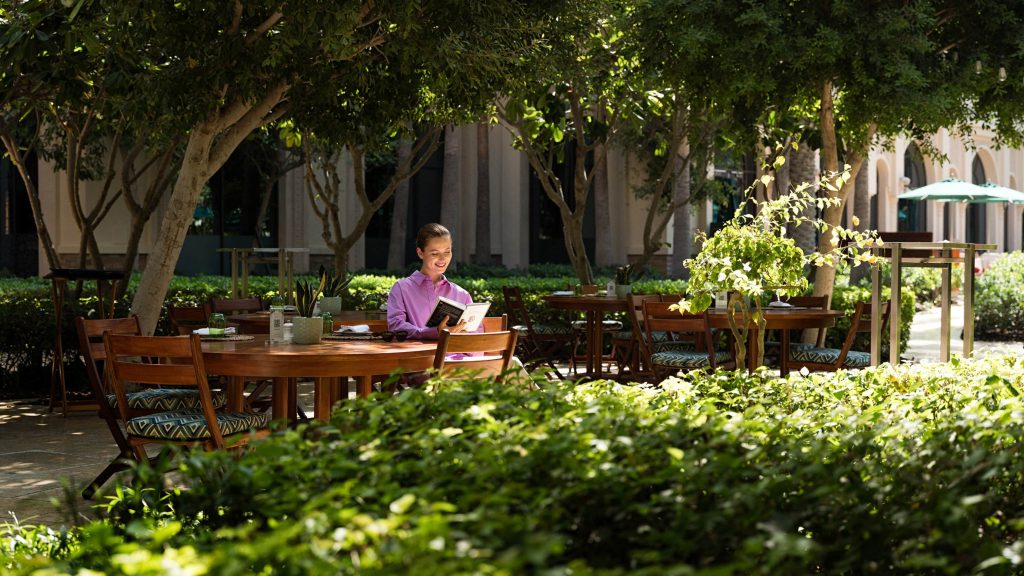The outbound travel market in the Gulf Cooperation Council (GCC) is on a trajectory of unprecedented growth. New figures forecast that GCC residents’ spending on overseas trips will surge from USD 75.1 million in 2024 to USD 158.8 million by 2034, reflecting a robust 7.8% compound annual growth rate (CAGR) over the decade.
Such explosive growth signals a major opportunity for the B2B travel industry, from travel agencies and tour operators to airlines and hotels, but it comes with a mandate to understand the key trends driving this boom.
The GCC countries’ outbound tourism market is expanding at a rapid pace, but it comes with a mandate to understand the key trends driving this boom.
What’s behind the GCC’s growing wanderlust, and how can travel providers in the Middle East leverage these trends? Below, we dive into the evolving preferences of GCC travellers, emerging niches like sustainable and wellness tourism, and actionable strategies to tap into this lucrative market.
Key Drivers Fuelling the GCC Travel Boom
Several factors are propelling the rise of outbound tourism across Saudi Arabia, the UAE, Qatar, Bahrain, Kuwait, and Oman. Understanding these drivers is crucial for businesses aiming to attract GCC travellers:
Increasing Wealth

The GCC’s population is notably affluent, with high disposable incomes and a strong appetite for international travel. Many GCC travellers now seek high-end travel packages, bespoke tours, and exclusive destinations that cater to these discerning tastes.
Notably, GCC tourists are big spenders; some studies show, for example, that Qatari and Kuwaiti travellers spend on average $4,000 and $3,000 per trip abroad, far above global norms. This spending power underpins the luxury travel trend.
Improved International Connectivity
The expansion of Gulf-based airlines (Emirates, Qatar Airways, Saudia, and others) has made global travel more accessible than ever. New routes and more frequent flights mean GCC travellers have a growing menu of destinations at their fingertips.
Improved air connectivity, from direct flights to Europe and Asia to emerging routes in Africa, is opening up new tourism hotspots for the region’s travellers. This connectivity, combined with competitive airfares, is lowering barriers to long-haul travel.
Government Incentives
GCC governments are actively encouraging outbound travel as part of a broader vision of economic and social development. These policies are boosting the GCC countries’ outbound tourism market, as authorities ease visa regulations and launch tourism promotion agreements.
Across the Gulf, authorities have eased visa regulations, launched tourism promotion agreements, and invested heavily in travel infrastructure. For example, several GCC states have negotiated visa waivers or convenient e-visa processes with other countries, making it simpler for their citizens to explore the world.
These pro-travel policies, along with generous public holidays and high-quality airports, enable seamless travel experiences for GCC nationals. Government support also signals to travel businesses that catering to outbound citizens is a national priority, not just an individual luxury.
Technological Advances
The GCC is a digitally savvy region with high social media usage and smartphone penetration, and this is transforming how people plan and book trips. Online travel agencies, mobile apps, and social media influencers now play a central role in trip inspiration and booking for GCC travellers. The convenience of app-based itineraries, e-payment, and even AI-driven travel planning (one recent survey found 67% of GCC travellers are using AI tools to plan holidays) has lowered the friction of organising complex trips.
Emerging GCC Travel Trends
As GCC outbound tourism expands, traveller preferences are diversifying beyond the classic sun-and-shopping getaways. Several emerging trends stand out in the GCC:
Luxury and personalisation
Luxury travel is ingrained in the fabric of GCC tourism, but it’s increasingly about exclusive experiences over material indulgence. GCC travellers, especially from wealthy segments in Saudi Arabia and the UAE, often expect the highest levels of service, privacy, and personalisation. In fact, roughly two-thirds of GCC international travellers are aged 25 – 45 and heavily favour luxury and exclusive experiences when abroad.
This could mean booking five-star urban hotels and private villas, or opting for first-class flights and personal chauffeurs. Destinations worldwide are taking note and tailoring offerings to lure these high spenders, for instance, South Korea recently launched an initiative to attract ultra-rich GCC tourists by developing new luxury accommodations and shopping districts
For travel providers, the implication is clear: offer tailor-made experiences and concierge-level service that matches the sophistication GCC travellers enjoy at home. Those who can combine opulence with authentic local flavour will win loyalty in this segment.
Sustainability Enters the Itinerary

A few years ago, sustainable tourism might not have been top of mind for Middle Eastern travellers, but times are changing. Environmental consciousness is rising notably among GCC’s younger and affluent travellers. A recent Marriott Bonvoy survey found that 87% of UAE travellers and 82% of Saudi travellers now factor the environmental impact into their travel plans.
In practice, this trend is reflected in choices like sustainable luxury resorts (e.g. resorts that use solar power, recycle greywater, or support wildlife initiatives) and itineraries that allow travellers to “give back” to communities. Many GCC tourists now appreciate experiences such as visiting nature reserves, participating in eco-tours, or simply opting for providers that demonstrably care about sustainability.
This doesn’t mean GCC travellers are skimping on comfort; rather, they want eco-conscious yet upscale options. Travel businesses targeting the Middle East market should highlight their green credentials and even incorporate elements of slow travel, for example, encouraging longer stays in one destination to deepen engagement and reduce frequent flying. As sustainability moves from a niche to a mainstream expectation, it’s becoming a key differentiator for attracting GCC clientele who wish to travel responsibly without compromising on quality.
An Appetite for Adventure
Beyond luxury hotels, a growing cohort of GCC travellers are chasing adrenaline and adventure abroad. The region’s young population and exposure to global social media trends have spurred interest in everything from mountain trekking to extreme sports.
Over 80% of surveyed travellers from Saudi Arabia and the UAE say they feel “braver” on holiday, trying activities they wouldn’t at home. Nearly half have tried high-altitude thrills or high-energy exploits like zip-lining and theme park rides on recent trips abroad.
Popular adventure options for GCC outbound tourists include:
- Ski vacations
- African safaris
- Scuba diving in exotic waters
- Mountain hiking expeditions
- Niche sports tourism (like attending major international sporting events or training camps)
Tour operators are responding by packaging tailored adventure itineraries (with considerations for cultural comfort, e.g. halal food options on a trekking tour). For Middle Eastern travel agencies, partnering with specialised adventure providers or offering add-ons like private guides and luxury camping can make these trips more appealing to first-timers.
The key is to balance thrill with safety and comfort, giving GCC travellers a taste of adventure with the assurance of reputable service. With the right approach, the region’s love for adventure, dubbed the “Bravecation” trend by Marriott’s report, represents a significant growth avenue.
Five Ways Travel Providers Can Leverage These Trends
For travel industry providers, whether an airline, a travel agency, or a hotel, the rise of the GCC outbound market is a call to action. Here are some actionable strategies to leverage this wave:
- Customise and personalise offerings
Given the diversity from luxury seekers to adventure enthusiasts, a one-size-fits-all approach won’t work. Develop tailored packages for different segments. The more you can cater to specific interests, the more you’ll appeal to GCC travellers who expect bespoke service. Leverage data and past customer preferences to personalise itineraries at scale.
- Embrace digital channels and marketing

To reach GCC travellers, meet them where they are, online. Ensure your booking platforms and websites are mobile-friendly and, ideally, available in Arabic as well as English. Social media is king in the GCC, consider partnerships with regional travel influencers and targeted campaigns on Instagram, Snapchat, and TikTok that showcase aspirational travel experiences.
Also, harness emerging tech, for example, using AI chatbots for instant travel support, or even VR previews of destinations. A tech-forward, omnichannel approach will resonate with the tech-savvy GCC audience that increasingly relies on apps and online research for trip planning.
- Highlight sustainability and CSR initiatives
To appeal to the new eco-conscious mindset, clearly communicate your brand’s sustainability efforts. Airlines can promote their carbon offset programs or modern fuel-efficient fleets, and hotels can showcase green certifications, recycling programs, or farm-to-table dining options. Tour operators might include visits to community projects or nature conservancies as part of the itinerary.
Importantly, ensure these are not just token gestures; Gulf travellers are becoming savvy at spotting greenwashing. Authentic sustainability, combined with luxury, for example, a high-end resort that is solar-powered and actively supports marine conservation, can be a compelling sell. Demonstrating social responsibility will not only attract customers but also build goodwill with GCC governments, emphasising sustainable development.
Also read: How MENA’s travel industry is embracing sustainability
- Invest in staff training and cultural fluency
Winning the GCC market often comes down to the details of hospitality. Train your front-line staff on cultural customs and preferences of Middle Eastern guests. This could range from having Arabic-speaking staff or translators available, to understanding dietary needs (e.g. ensuring halal food options and familiarity with Middle Eastern cuisine), to respecting prayer times and providing information on nearby mosques.
Small touches, like a welcome note in Arabic, or offering Ramadan meal arrangements if your guests travel during the holy month, go a long way in making GCC travellers feel welcome. Such cultural tailoring is an often-overlooked yet critical competitive edge.
- Leverage regional partnerships

If you’re an overseas destination or hospitality brand, consider partnerships with GCC-based travel agencies and tour operators who already have the trust of local clients. Joint promotions with Middle Eastern airlines or participating in GCC travel fairs (like Dubai’s Arabian Travel Market) can boost your visibility.
For GCC-based providers, collaborate with tourism boards and embassies, for instance, co-host informational sessions on new destinations opening up or work with government initiatives that promote citizen travel. The public sector’s push (e.g. tourism diversification goals in Saudi Vision 2030) can amplify your marketing if you align with it.
Bottom line: A Regional Opportunity is on the Rise
In summary, the GCC outbound tourism market’s climb from $75 billion to nearly $159 billion in a decade is more than a statistic; it’s a call that speaks to a region on the move. Those in the travel business should gear up, innovate, and collaborate, because a 7.8% CAGR market boom doesn’t come often.



